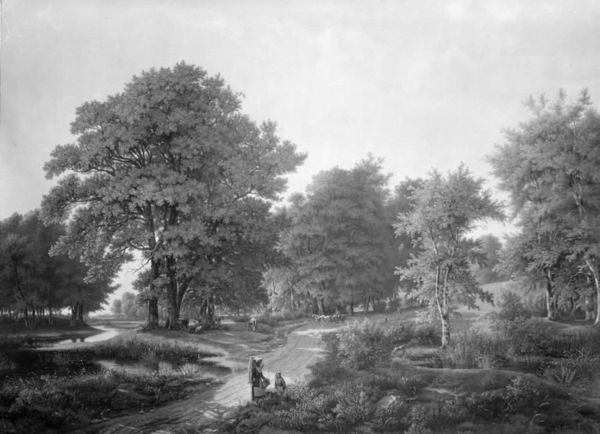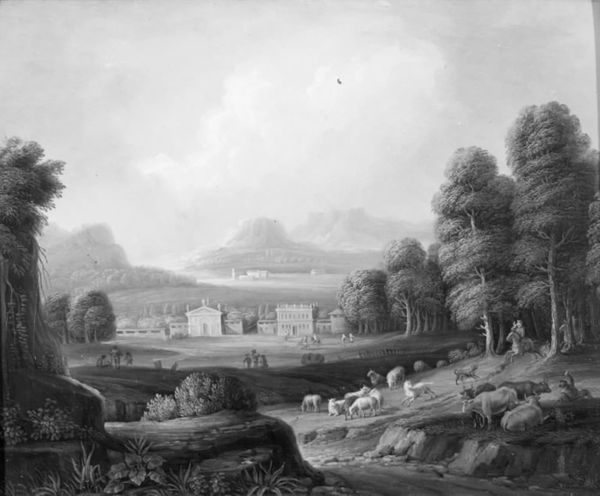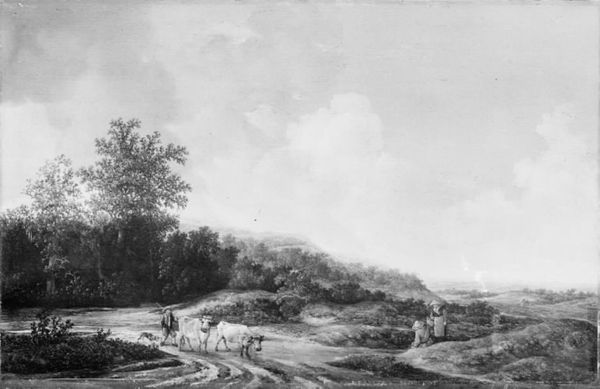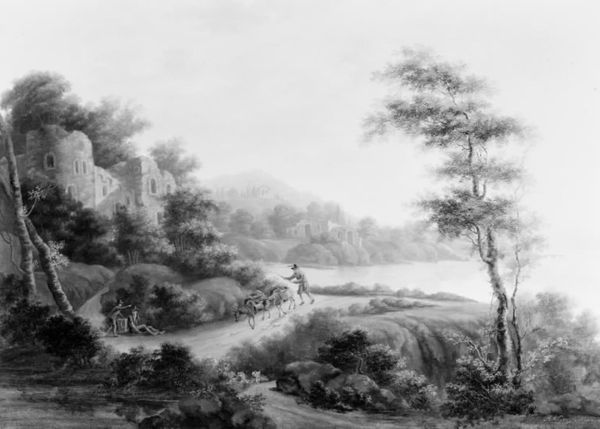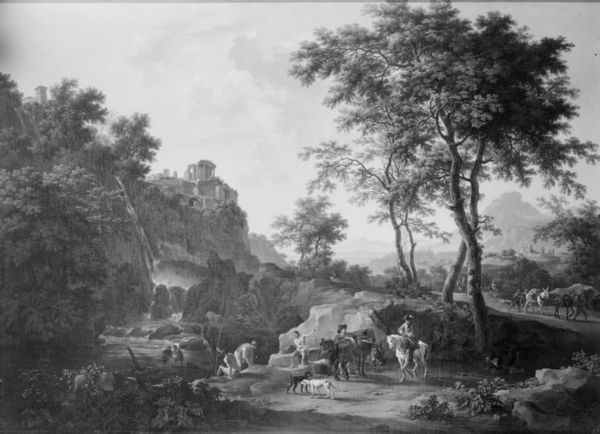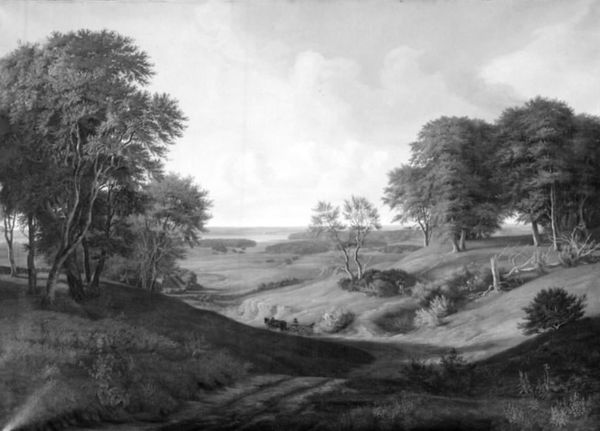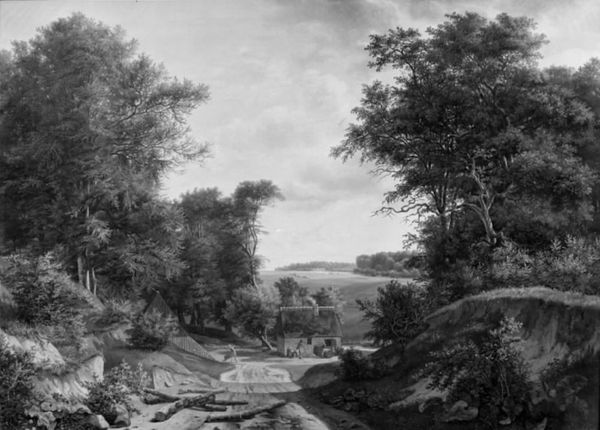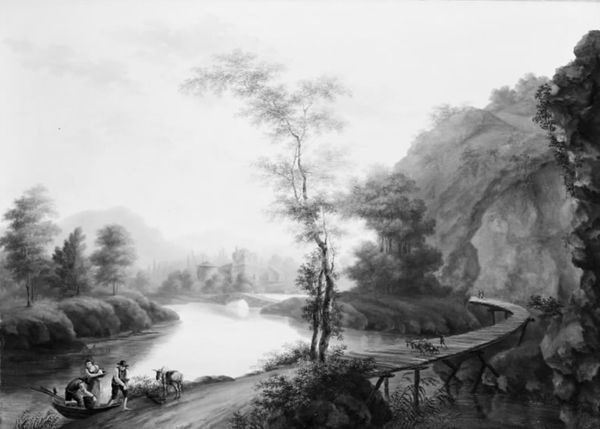
painting, canvas
#
painting
#
landscape
#
canvas
#
romanticism
#
black and white
#
monochrome photography
#
monochrome
#
realism
#
monochrome
Dimensions: 138 cm (height) x 180 cm (width) (Netto)
Curator: This artwork, dating back to 1840, is "Udsigt over havet ved den holstenske kyst nær Kiel" – a landscape painting by Johann Mohr. It's currently held here at the SMK. What's your initial read? Editor: My first impression is quiet contemplation. It’s monochrome, almost like a faded photograph capturing a wistful, melancholic scene, rather like early photography. What a still view of the countryside! Curator: Considering the era, think about the materials readily available to Mohr, most notably the pigments, and the canvas. There’s a strong focus on tonal variation – rendering the effects of light in this landscape view, with the atmospheric perspective as we gaze out to the sea horizon. Editor: That's where my eye goes. There's the sea barely there; it looks misty on the horizon, but still allows for shipping routes. Remember, in 1840, coastal trade was extremely relevant, and its depiction on public view underscores its social value. What a political view! Curator: Precisely, and think about the labor involved in its creation. It shows dedication to mastering this traditional medium! The details in the trees and the meticulous depiction of foliage; and Mohr must have worked on location. Editor: I'm curious about its patronage, though. Landscape paintings had been favored and displayed in salons as an aspirational lifestyle, showcasing country ownership, and Mohr was probably seeking recognition by portraying these northern coasts with such tranquility. Who might have owned it originally and what political message are they sending? Curator: An excellent point about viewership and the landscape genre conventions. From my materialist point of view, I tend to consider how the painting was produced and marketed—all influencing its social status in the art world of its day. And where was it first displayed? Editor: These paintings were part of shaping regional identities and showing state presence. As museums increased in social relevance through their holdings and the shaping of culture and political standing, the painting reflects the artist's relationship to social, cultural, and economic context. Curator: Interesting. Perhaps the dialogue about production methods in fine art versus mere artisanry contributed to its elevated position. The materials used, and the techniques involved surely mattered, didn't they? Editor: Ultimately, both intersect in shaping our present reading, even in the setting of the museum itself, but also reflecting that initial artistic intention by capturing that unique landscape near Kiel back then. Curator: Well, I appreciate looking at "Udsigt over havet ved den holstenske kyst nær Kiel" with a new perspective, highlighting how our areas of focus can meet with social issues. Editor: It is quite interesting, and always useful to look at a painting this way to allow a richer context in our own present time.
Comments
No comments
Be the first to comment and join the conversation on the ultimate creative platform.
